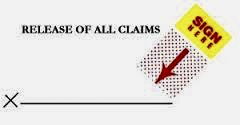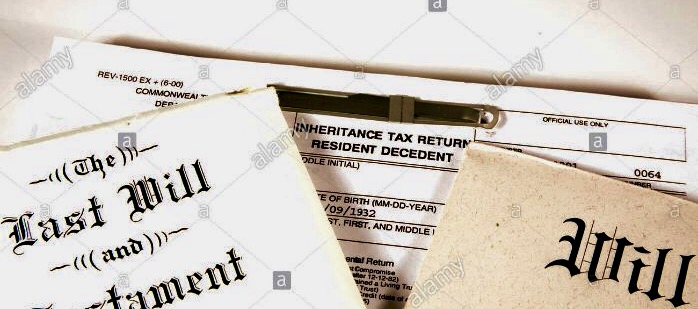Bach Estate 2017 BCSC 548 cured a gift to witness to will to be valid when prior to WESA on March 31, 2014 it would have been invalid.
One of the witnesses to the will was the husband of the deceased and a beneficiary under her will.
The Court followed the reasoning of previous decisions made under S 58 WESA to cure defective wills and allowed extrinsic evidence to be introduced to show the true testamentary intention of the testator.
Validity
(2) A person may witness a will even though he or she may receive a gift under it, but the gift may be void under section 43 [gifts to witnesses].
(3) A will is not invalid only because a witness was, at the time the will was signed by the will-maker, or afterwards became, legally incapable of proving the will, unless the witness was not 19 years of age or older at the time the will was signed by the will-maker.
47 The document signed by Mr. Bach on September 9 meets the requirements of ss. 37(1) and 40 and is therefore a valid will under the WESA. This act revoked all prior wills created by Mr. Bach: s.55 WESA.
48 The difficulty arises from s. 43(1):
43(1) WESA states:
Unless a court otherwise declares under subsection (4), a gift in a will is void if it is to
(a) a witness to the will-maker’s signature or to the spouse of that witness,
(b) a person signing the will by the will-maker’s direction, or the spouse of the person signing, or
(c) a person claiming under a person, other than the will-maker, referred to in paragraph (a) or (b).
49 One of the witnesses to this will was Mr. Thibodeau, the husband of the beneficiary under the will.
50 Prior to 2014, the law was clear: the court had no discretion to allow for such gifts: see Estate of Jason M. Bird, 2002 BCSC 1584. This rule operated as a safeguard against fraud and undue influence, however, the rigid application often defeat the genuine intention of the testator. Under the rule, the gift to Ms. Thibodeau would have failed.
51 However, on March 31, 2014, WESA came into force. Under this new legislation, gifts made in these circumstances are still presumptively void however, the court now has the discretion to declare them valid under s. 43(4):
(4) On application, the court may declare that a gift to a person referred to in subsection (1) is not void and is to take effect, if the court is satisfied that the will-maker intended to make the gift to the person even though the person or his or her spouse was a witness to the will.
52 I am not aware of any case in British Columbia in which this provision has been applied. I find however, that recent jurisprudence under s. 58 of the WESA (concerning court-ordered curing of formally deficient wills) that relates to testamentary intent instructive.
53 For example, in Yaremkewich Estate (Re), 2015 BCSC 1124, Watchuk J. considered s. 58 and the concept of testamentary intent. She stated:
[29] WESA, which came into effect on March 31, 2014, contains a new provision in s. 58 that even if a document fails to comply with the formalities of the statute, a court may nonetheless order that the document is fully effective as if it had complied with the statute.
The provision reads as follows:
Court order curing deficiencies
58(1) In this section, “record” includes data that
(a) is recorded or stored electronically,
(b) can be read by a person, and
(c) is capable of reproduction in a visible form.
(2) On application, the court may make an order under subsection (3) if the court determines that a record, document or writing or marking on a will or document represents
(a) the testamentary intentions of a deceased person,
(b) the intention of a deceased person to revoke, alter or revive a will or testamentary disposition of the deceased person, or
(c) the intention of a deceased person to revoke, alter or revive a testamentary disposition contained in a document other than a will.
(3) Even though the making, revocation, alteration or revival of a will does not comply with this Act, the court may, as the circumstances require, order that a record or document or writing or marking on a will or document be fully effective as though it had been made
(a) as the will or part of the will of the deceased person,
(b) as a revocation, alteration or revival of a will of the deceased person, or
(c) as the testamentary intention of the deceased person.
(4) If an alteration to a will makes a word or provision illegible and the court is satisfied that the alteration was not made in accordance with this Act, the court may reinstate the original word or provision if there is evidence to establish what the original word or provision was.
[30] Accordingly, s. 58(3)(a) empowers the court to order that a document or other record is fully effective as the will of a deceased person if the court is satisfied that the document represents the testamentary intentions of that deceased person.
[Emphasis added.]
54 The same inquiry is relevant under s. 43(4). Watchuk J. continued:
Evidence
[31] As a preliminary matter, the statements that Ms. Yaremkewich made to the various affiants and the other evidence of her intention in the affidavits are admissible evidence in this case.
[32] The approach to evidence under Manitoba’s Wills Act, R.S.M. 1988, c. W-150 was summarized by Philp, J.A. in Langseth Estate v. Gardiner (1990), 75 D.L.R. (4th) 25 at 33 (Man. C.A.)
The general rule that extrinsic evidence is not admissible in construing a will (the function of a court of construction) does not apply to the probate court whose duty is to determine whether a document is a valid will. Extrinsic evidence is admissible on the question of testamentary intent, and the Court is not limited to the evidence that an inspection of the document provides.
Testamentary Intent
[33] The s. 58 curative provision was well summarized in Estate of Young, 2015 BCSC 182 [Young]. This provision is one of WESA‘s “most far-reaching remedial provisions”, and it represents a marked departure from the traditional, formalistic approach to the creation of wills (at para. 16). It confers the court with a broad discretion to treat a testamentary record as valid even if it does not comply with the formalities of the statute. However, this provision can only be used to cure errors concerning formalities, and cannot cure substantive errors such as testamentary incapacity or undue influence (at para. 17).
[34] To apply s. 58, the applicant must prove on the balance of probabilities that the record at issue is authentic and that it represents the testamentary intentions of the will-maker: Young at paras. 19, 36; and Bunn Estate (Re) (1992) 100 Sask. R. 231 at 237 (C.A.) [Bunn Estate]. This analysis asks whether the court is satisfied that the document records the will-maker’s deliberate or fixed and final expression of intention as to the disposal of her property upon death. This was summarized in Young as follows:
[34] As is apparent from the foregoing, a determination of whether to exercise the court’s curative power with respect to a non-compliant document is inevitably and intensely fact-sensitive. Two principal issues for consideration emerge from the post-1995 Manitoba authorities. The first in an obvious threshold issue: is the document authentic? The second, and core, issue is whether the non-compliant document represents the deceased’s testamentary intentions, as that concept was explained in George.
[35] In George the court confirmed that testamentary intention means much more than the expression of how a person would like his or her property to be disposed of after death. The key question is whether the document records a deliberate or fixed and final expression of intention as to the disposal of the deceased’s property on death. A deliberate or fixed and final intention is not the equivalent of an irrevocable intention, given that a will, by its nature, is revocable until the death of its maker. Rather, the intention must be fixed and final at the material time, which will vary depending on the circumstances.
[Emphasis added.]
55 The question, then, is whether the gift expresses the testamentary intentions of Mr. Bach, despite the fact that the will was witnessed by the spouse of Sharon Thibodeau. Extrinsic evidence is admissible.
56 Here, there is the evidence from Ms. Veres: she deposed that when she visited Mr. Bach in August, 2014, he made no mention of intending to change his will. He was frustrated in his efforts to sell the house and said to her in this regard: “you would just have to deal with selling the house yourself”.
57 I note that if a person chooses to exclude a relative from her or his will, it is human not to mention it. The statement he apparently made, however, implies that he was not intending to change his will.
58 But the evidence to the contrary is overwhelming. First, Ms. Thibodeau deposed that on July 17, 2014 the deceased told her that he intended to change his will.
59 Her affidavit goes on:
- We were sitting in Terry’s house, and Terry started a conversation with me and said he was going to change his Will, and that he wanted to leave everything to me, including his house. He said that I had always been there for him, and I had been so good to him all his life. He said that he did not know what he would have done without me. Terry said, “why should Jamie have my house?”, and that he had worked hard for it.
- Terry stated that Jamie [Veres] has a farm and all that land, she doesn’t need it. He further stated that Jamie had always told him that she did not want the house.
- Terry told me he was going to call Jamie and let her let her know that he was going to change his Will. I have no knowledge as to whether Terry told Jamie that he intended to change his Will or not; I never questioned him about that at any time.
60 Furthermore, as outlined above, Mr. Bach advised his friend Wendy Boyes that he was leaving all of his estate to his sister Sharon. He told her that on August 9, 2014. On September 2, 2014 he told his sister, Diane Vanderburg, that he wished to leave all of his estate to Ms. Thibodeau.
61 Dr. Willms’ evidence in this regard is significant as well. She deposed that a document expressing Mr. Bach’s intention to leave his estate to his sister was signed. She said that it was read aloud to him and that he stated that he agreed with the contents of the document and that he understood that the document was intended to indicate his wishes for the estate.
62 Finally, there is the evidence of the last 24 hours of Mr. Bach’s life. The deceased had asked Ms. Thibodeau and her husband to take him to a notary for the purpose of making a new will and making other final arrangements. That included signing a power of attorney appointing Ms. Thibodeau as his attorney.
63 On all the evidence, I am satisfied that the document executed on September 9, 2014 amounts to a will and represents Mr. Bach’s testamentary intent. The gift is not void.
64 The application is therefore allowed.










